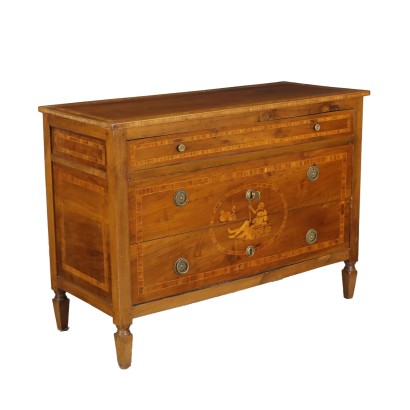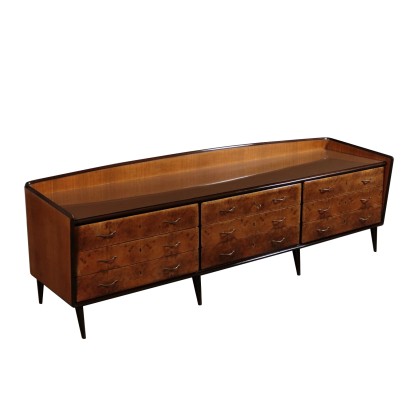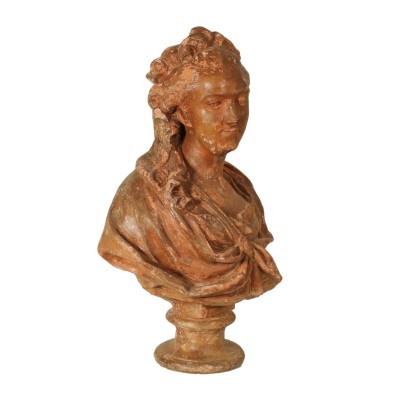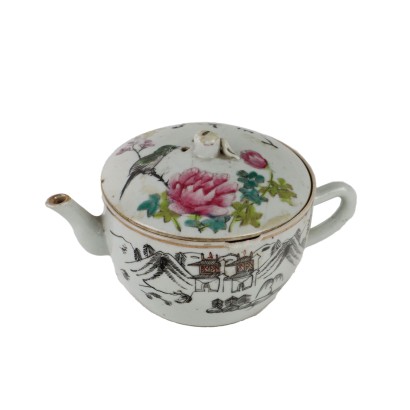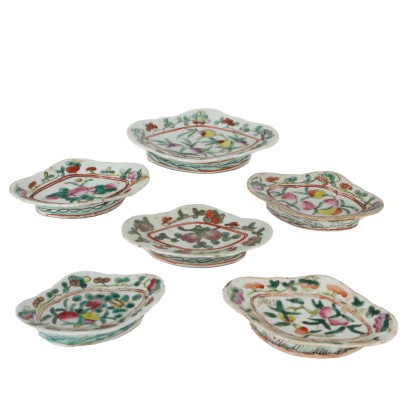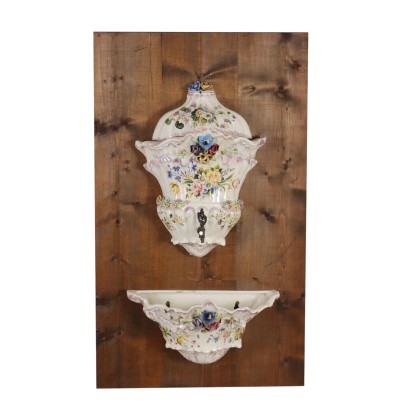Neoclassical Chest of Drawers Walnut Italy XVIII Century - Emilia-Romagna Last Fourth of the 18th Century
Features
Emilia-Romagna Last Fourth of the 18th Century
Style: Neo-Classical (1765-1790)
Age: 18th Century / 1701 - 1800
Origin: Piacenza, Emilia Romagna, Italy
Main essence: Maple , Boxwood , Walnut , Elm
Description
Piacenza neoclassical chest of drawers in walnut, Emilia-Romagna last quarter of the 18th century. Front with 3 drawers, the two largest of which are decorated with a mythological scene depicting Neptune and a sea monster within a central reserve. Fully threaded in maple and inlaid in elm, maple and boxwood. Truncated pyramidal legs; walnut interior. Drawer bottom restorations and replacements.
Product Condition:
Product that due to age and wear requires restoration and resumption of polishing.
Dimensions (cm):
Height: 95
Width: 131
Depth: 57
Additional Information
Style: Neo-Classical (1765-1790)
This historical period includes a first phase that can be properly defined as the Louis XVI style.
nOnly at a later time, with the maturation of archaeological fashions, was a new vision of furnishing civilization formulated and codified, now fully attributable to the Neoclassical Style.
In fact, both trends coexisted in unison until the last years of the eighteenth century.
nIn the field of cabinet making, the Directoire, Retour d'Egypte, Consular and Empire styles also fall within the neoclassical era.
nFind out more about Neoclassicism with the insights from our blog...
n
Age: 18th Century / 1701 - 1800
18th Century / 1701 - 1800 Main essence:
Maple
Hard, light wood used for inlays. It grows mainly in Austria, but it is widespread throughout the northern hemisphere, from Japan to North America, passing through China and Europe. It is one of the lightest woods ever, tending to white, it is similar to lime or birch wood. The briar is used in the production of ancient secretaires .
Boxwood
With a yellowish color, it is a very compact and hard wood, of oriental origin, which is obtained from evergreen shrubs of the Buxaceae family. It is used for inlays and for all-round workings both as furniture finishes and as small objects and sculptures.
Walnut
Walnut wood comes from the plant whose botanical name is juglans regia , probably originally from the East but very common in Europe. Light or dark brown in color, it is a hard wood with a beautiful grain, widely used in antique furniture. It was the main essence in Italy throughout the Renaissance and later had a good diffusion in Europe, especially in England, until the advent of mahogany. It was used for solid wood furniture and sometimes carvings and inlays, its only big limitation is that it suffers a lot from woodworm. In France it was widely used more than anything else in the provinces. In the second half of the eighteenth century its use decreased significantly because mahogany and other exotic woods were preferred.
Elm
Very hard and compact wood, which comes from ulmus campestris . It is distinguished by its reddish brown color. It was mainly used for rustic furniture in France, Holland and Scandinavia. In England, however, it was also used a lot in inlay work. 


